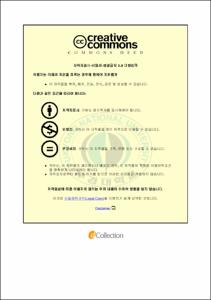새우 부산물을 이용한 조림 간장의 제조 및 품질 평가
- Alternative Title
- Processing Optimization of Tasty Soy Sauce Processed with Shrimp Byproducts and There Physicochemical Properties
- Abstract
- 본 연구에서는 새우 육을 분리하고 남은 잔사를 주재료로 하여 제조한 조림 간장 소스에서 추출한 향기성분을 보고하여 상품 가치의 극대화와 좀 더 특별하고 독특한 맛을 추구하는 현대인들을 만족시키기 위한 소스개발연구에 기초자료를 제공하고자 한다.
또한 새로운 제품이 개발되어 시장에 도입되면 이화학적 품질 특성이 제품의 성공이나 실패를 결정하는 것이 아니라 소비자의 관능적 기호도가 이를 결정하게 되는 만큼 새우 부산물을 이용한 조림 간장 소스에 인삼과 대추를 첨가하여 현대인의 건강과 맛을 충족시킬 수 있는 소스를 제조하여 관능적 특성에 중점을 두어 연구하였다.
주재료를 기존의 레시피인 장어뼈로 제조한 control군과 새우 부산물로 달리한 조림 간장 소스의 비교에서 새우 부산물로 만든 (SGT)소스가 단맛과 쓴맛이 강했으며 청량감을 느낄 수 있는 향 또한 장어뼈 소스(EST)보다 앞섰고 장어 특유의 어취가 새우 부산물을 사용한 소스에서는 감소됨을 관능검사를 통해 알 수 있었다.
주재료는 동일시하고 간장을 달리한 조림 간장 소스의 비교에서는 일본산 고이구찌 간장으로 제조한 소스가 국내산 몽고 간장을 이용한 소스보다 단맛이 다소 강하며 짠맛은 비슷한 정도로 나타났다. 쓴맛은 고이구찌 간장 소스에서는 약하게 감지되나 몽고 간장소스에서 약간 강하게 나타났으며, 청량감이나 점성, 간장 자체에 대한 향과 전체적인 선호도 또한 고이구찌 간장이 더 높았다.
동일한 주재료와 간장을 사용한 소스의 경우 한방 재료의 첨가 유무의 차이는 대추와 인삼이 첨가된 경우 표면 광택과 향이 우수했으며 선호도가 높았음을 알 수 있었고 이는 추후 대추와 인삼의 최적 첨가량 선정을 위한 연구가 필요하다고 사료된다.
소스의 향기성분 추출 결과로는 새우의 향기성분으로 알려져 있는 pyrazine류와 thiolane, thialdine이 대부분을 차지하며 2.5-dimethyl pyrazine, 2.6-dimethyl pyrazine 과 2.3-dimethyl pyrazine의 3종류가 동정되었고 thiolane, thialdine 등의 화합물이 고소한 향을 내며, limonene은 mint의 향기를 내기 때에 청량감을 주는 것을 알 수 있었다.
The crustaceans which is a marine products keeps a peculiar color, a taste and a direction, these taste and smell case of most the consumers of most prefer from the side which is symbolic and shrimp, consuming the crab is increasing.
Shrimp has been tried to be only as body part used in foodstuffs processing. The objectives of this thesis were added the shrimp byproduct and manufactures a tasty soy sauce with to reduce the food and trash which comes to throw away, increases a taste and a flavor in tasty soy sauce.
1. Sensory evaluation of Shrimp byproduct added Tasty Soy Sauce Made with Waste of Shrimp and eel bones
The main material the source which from the soy sauce which differs with the eel bone and the shrimp byproduct prepared with sweet taste and bitter was strong. The direction which is the possibility of feeling a refreshing feeling also eel bone sauce preceded. Decreasing, sensory test will lead from the sauce where eel peculiar a fishy smell uses the shrimp byproduct tasty soy sauce and the possibility which will know was.
The main material identifies and from comparison of the soy sauce source which differs the soy sauce, The sauce which manufactures Goikuchi soy sauce uses the Mongo soy sauce The sweet taste the somewhat is strong and the salty taste is similar. The bitter taste is perceived weakly from Goikuchi soy sauce from Mongo soy sauce to some strong flavor to appear, with direction the preference which is whole also Goikuchi soy sauce were higher the Mongo soy sauce nicely about refreshing feeling or viscosity and soy sauce oneself.
In case of the main material which is identical and the source which uses the soy sauce, the preference the case ostensible luster and the flavor where, the jujube and the ginseng of addition presence of the traditional oriental medicine material are added to be excellent being high, the possibility of knowing was.
This is thought that the research for the optimum addition quantity selection of the following jujube and the ginseng is necessary.
2. The aroma volatile compounds of tasty soy sauce from the headspace
The main aroma compounds identified from the headspace of the Tasty Soy Sauces made with Waste of Shrimp byproduct were Ethanol, 3-Methyl-butanal, 2-Methyl-butanal, Methylenechloride and Limonene. The volatile ingredients which separate from shrimp byproduct tasty soy sauce pyrazine type and thiolane and thialdine occupy a most, 2.5-dimethyl pyrazine and 2.6-dimethyl pyrazine and 2.3-dimethyl pyrazine 3 types were extracted.
- Issued Date
- 2009
- Awarded Date
- 2009. 8
- Type
- Dissertation
- Publisher
- 부경대학교 산업대학원
- Alternative Author(s)
- Cho, Eun-Hye
- Affiliation
- 부경대학교 산업대학원
- Department
- 산업대학원 식품산업공학과
- Advisor
- 이양봉
- Table Of Contents
- Ⅰ. 서론 = 1
Ⅱ. 재료 및 방법 = 5
2.1. 재료 = 5
2.1.1. 재료의 준비 = 7
2.1.2. 재료 혼합비 = 7
2.1.3. 소스의 제조 공정 = 8
2.2. 실험 방법 = 9
2.2.1. 일반성분 측정 = 9
2.2.2. 색차 측정 = 9
2.2.3. 물성 측정 = 10
2.2.4. pH 측정 = 10
2.2.5. 산가 측정 = 10
2.2.6. 과산화물가 측정 = 11
2.2.7 휘발성 향기성분 추출 = 11
2.2.8 SPME법에 의한 휘발성 성분의 추출 = 12
2.2.9 GC-FID/MSD에 의한 휘발성 성분 동정 = 13
2.2.10. 관능검사 = 16
Ⅲ. 결과 및 고찰 = 19
3.1. 소스 평가 = 19
3.1.1 일반 성분 = 19
3.1.2 색차 = 19
3.1.3 물성 = 20
3.1.4 pH 측정 = 20
3.1.5 산가 측정 = 22
3.1.6 과산화물가 측정 = 22
3.1.7 휘발성 향기성분 측정 = 22
3.2. 관능검사 = 26
3.2.1. 재료의 차이에 따른 관능검사 결과 = 26
3.2.2. 간장의 차이에 따른 관능검사 결과 = 28
3.2.3. 소스에 대추와 인삼을 첨가한 경우 = 30
3.3. 제품에 적용한 관능검사 결과 = 31
3.3.1. 재료의 차이에 따른 관능검사 결과 = 31
3.3.2. 간장의 차이에 따른 관능검사 결과 = 33
3.3.3. 소스에 대추와 인삼을 첨가한 경우 = 34
Ⅳ. 요약 = 35
참고문헌 = 38
감사의 글 = 43
- Degree
- Master
- Files in This Item:
-
-
Download
 새우 부산물을 이용한 조림 간장의 제조 및 품질 평가.pdf
기타 데이터 / 886.14 kB / Adobe PDF
새우 부산물을 이용한 조림 간장의 제조 및 품질 평가.pdf
기타 데이터 / 886.14 kB / Adobe PDF
-
Items in Repository are protected by copyright, with all rights reserved, unless otherwise indicated.